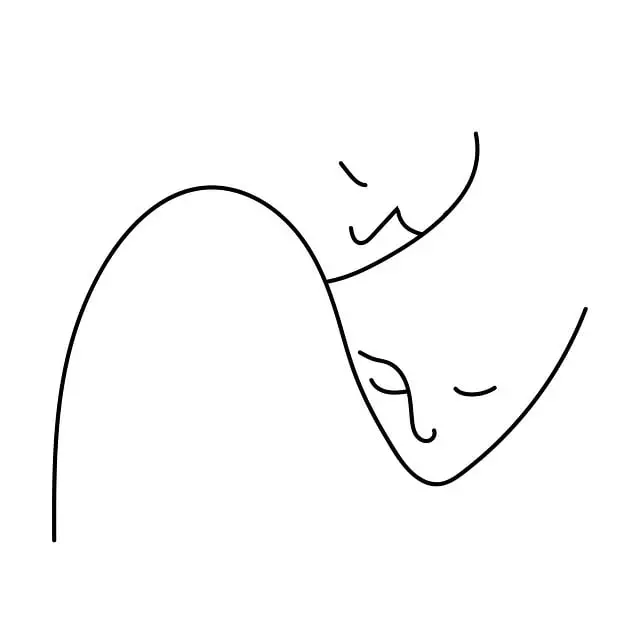Botox is a popular, non-surgical treatment for minimizing forehead lines, frown lines, and crow's feet caused by aging, sun exposure, and muscle movement. It temporarily paralyzes specific muscles, smoothing skin and reducing wrinkles. Though individual results vary, Botox offers a quick, effective solution with minimal recovery time, making it an attractive option for delaying or minimizing signs of aging. Consultation with a board-certified dermatologist is crucial for safety and effectiveness, addressing concerns about side effects, results duration, and natural appearance.
“Say goodbye to those pesky crow’s feet! This comprehensive guide explores Botox as a revolutionary solution for reducing fine lines and wrinkles around the eyes. We delve into the science behind its effectiveness, from targeting forehead lines and frown lines to its widespread cosmetic benefits. Learn about the step-by-step procedure, potential risks, and finding the perfect dermatologist. Discover why Botox is a top choice for those seeking youthful radiance, especially when addressing crow’s feet—a common concern in the ever-bustling world of skincare.”
Understanding Crow's Feet and Their Causes

Crow’s feet, named after their resemblance to a bird’s foot tracks, are fine lines that appear around the eyes, often starting at the outer corners. These delicate wrinkles are caused by a combination of factors, including age, sun exposure, and muscle movement. As we age, our skin produces less collagen and elastin, leading to reduced flexibility and increased visibility of underlying blood vessels and muscles. Sun damage from UV rays further exacerbates this process, causing premature aging.
Muscle contraction, especially when frowning or smiling, contributes significantly to the formation of crow’s feet. Botox for forehead lines and frown lines has become a popular solution for those seeking to minimize these signs of aging. By injecting botulinum toxin into specific muscle groups, dermatologists can temporarily paralyze them, preventing the contractions that lead to wrinkling. This non-surgical procedure offers a quick and effective way to reduce the appearance of crow’s feet, providing a smoother and more youthful complexion.
What is Botox? A Comprehensive Overview

Botox, short for botulinum toxin, is a protein produced by bacteria that has found its way into the world of aesthetic medicine. It’s a popular non-surgical treatment used to temporarily reduce the appearance of fine lines and wrinkles, especially those often referred to as ‘crow’s feet’ around the eyes. But Botox isn’t just for the forehead and crow’s feet; it’s a versatile tool in the fight against age-related changes. It’s also commonly used to treat frown lines between the eyebrows, creating a smoother, more youthful complexion.
When injected by a qualified professional, Botox works by blocking nerve signals that cause muscles to contract, thereby smoothing out skin and reducing the depth of wrinkles. The procedure is typically quick, non-invasive, and well-tolerated, making it a top choice for those seeking to delay or minimize the signs of aging without surgery. As with any medical treatment, individual results may vary.
The Science Behind Botox for Forehead Lines and Frown Lines

Benefits of Using Botox for Cosmetic Purposes

Procedure Step-by-Step: Injecting Botox into Crow's Feet

The process of injecting Botox into crow’s feet begins with a detailed consultation between the patient and dermatologist. During this session, the dermatologist will assess the severity of the wrinkles, discuss expectations, and review any potential risks or side effects. If both parties agree that Botox is the best course of action, the procedure can proceed.
On the day of the treatment, the patient’s face is cleaned and prepared. The dermatologist uses a fine needle to inject small amounts of Botox into specific points around the eyes, targeting the crow’s feet area. This precise injection technique ensures minimal discomfort and maximum effectiveness in reducing the appearance of wrinkles. After the procedure, patients may experience temporary redness or swelling but can usually resume their normal activities within a few hours.
Potential Risks, Side Effects, and Downtime

Botox is a popular choice for those seeking to reduce the appearance of forehead lines, frown lines, and crow’s feet. However, like any medical procedure, it’s not without potential risks. Some common side effects include temporary redness, swelling, or bruising at the injection site. There may also be discomfort during the injections, though this can be managed with topical anaesthetics. In rare cases, patients experience more serious reactions such as headaches, nausea, or difficulty breathing—requiring immediate medical attention.
Downtime is generally minimal with Botox treatments for facial lines. Most people resume their normal activities shortly after the procedure, though it’s advisable to avoid strenuous exercise and certain medications that could increase bleeding for a day or two. It’s important to discuss these potential risks and side effects openly with your healthcare provider before undergoing any cosmetic procedure, including Botox injections for forehead lines and frown lines.
Finding the Right Dermatologist or Injector

Choosing the right dermatologist or injector is crucial when considering Botox treatments, especially for addressing crow’s feet and other facial lines like forehead lines and frown lines. It’s essential to find a qualified professional with extensive experience in cosmetic injections to ensure safety and effectiveness. Look for board-certified dermatologists or plastic surgeons who specialize in non-surgical procedures, as they have the expertise needed to administer Botox properly.
Reputation is key; research their background, check patient reviews, and ask for referrals from trusted sources. Experience matters; a practitioner familiar with various Botox products and injection techniques will be able to tailor the treatment to your needs. During consultations, inquire about their approach, the types of Botox they use (like Botox for forehead lines), potential side effects, and what to expect post-treatment. This ensures you’re in capable hands and increases the chances of achieving desired results without complications.
FAQs: Answering Common Concerns About Botox Treatments

FAQs: Answering Common Concerns About Botox Treatments
Many people considering Botox for crow’s feet or Botox for forehead lines and frown lines have similar questions and concerns. One common query is whether Botox is safe. The answer is yes; when administered by a licensed professional, Botox treatments are generally considered safe. Side effects are minimal and often temporary, such as mild bruising or swelling. It’s also important to know that Botox works by relaxing muscles, not removing existing lines. This means it’s most effective for preventing the formation of new wrinkles and improving overall skin appearance.
Another frequent concern revolves around the duration of results. After a Botox treatment, you can expect the effects to last anywhere from 3 to 6 months, depending on various factors including your age, lifestyle, and the area treated. Maintenance treatments are often recommended to sustain optimal results. Moreover, some individuals worry about looking “over-injected” or unnatural. Skilled practitioners prioritize natural-looking results, injecting Botox precisely where needed. They tailor each treatment plan to the patient’s unique facial structure and aesthetic goals, ensuring a subtle and effective outcome.
